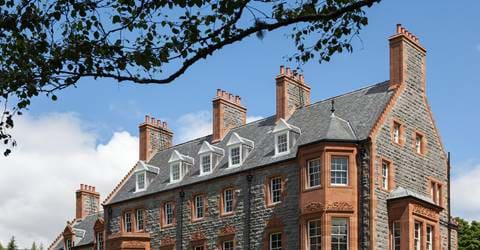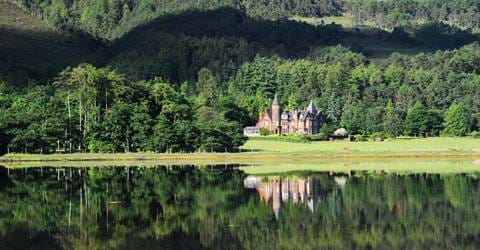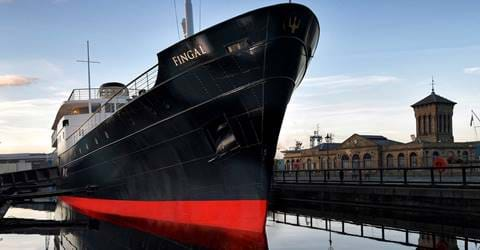Hotels with a hidden history
When you book a luxury hotel break in Scotland, you expect a little history and provenance with your stay. After all, it gives a place character.
Many Scottish hotels boast rich and fascinating backstories, often about the former owners, illustrious guests who’ve checked in, or historic events that have shaped their history. But there are a few that had an altogether different purpose in their former lives.
From a hotel with connections to Lord Byron to a yacht that once carried vital supplies to lighthouse keepers, read on to discover the rich and surprising histories behind a few of our favourite Scottish hotels.
Glencoe House – From hospital to hospitality
Today, Glencoe House welcomes guests for stately stays amid sumptuous surroundings. Looking around the refined interior, you could hardly tell that until relatively recently, the hotel served as a hospital.
It all started in World War II, when the main house served as a 38-bed convalescent hospital to military personnel. Following the war, in the late 1940s, the house was gifted to local authorities as a hospital, going on to become a 16-bed maternity hospital for North Argyll in 1950.
After an alternative maternity facility was developed in Oban, in 1970 Glencoe House became a hospital for geriatric patients until it closed in 2009. As such, the building has played a significant role in the lives of many local families and holds special meaning for the area’s population.
In 2011, Glencoe House was bought by Roger Niemeyer and Judy Pate, who restored the building to its former glory and the magnificent hotel you can visit today.
The Torridon – From hunting to astrology
The Torridon in Wester Ross is famous as the most northerly five-star hotel in Scotland. Its history can be traced to the late 19th century, when it was built for its original purpose as a hunting lodge.
First known as Ben Damph House, the lodge was built by the first Earl of Lovelace, an English landowner and distinguished scientist who was also famous for marrying Lord Byron’s only legitimate daughter, Ada.
It’s a prime example of the Scottish holiday homes that gained popularity with the English nobility in the Victorian era. Many of the building materials had to be brought to the remote location by boat – including the soil in the kitchen garden!
The hall and dining room are both dedicated to Queen Victoria. The drawing room boasts an unusual ceiling featuring the signs of the zodiac – also a tribute to the queen, who was fascinated by astrology.
Today, visitors can look up at that same constellation-scattered ceiling while enjoying a dram in the renowned whisky bar, or take advantage of the hotel’s remoteness to view thousands of real stars with their stargazing experience.
Fingal – From lighthouses to Leith
Today, the luxury floating hotel Fingal graces the Leith waterfront in Edinburgh, but her story begins in Glasgow, where she was the last ship built by the Blythswood Shipbuilding Company.
Her initial purpose was to ship lighthouse keepers and supplies to lighthouses throughout the west and north of Scotland. She became a harbinger of good news - when lighthouse keepers saw Fingal on the horizon, it meant their three-week stint was over and that the new lighthouse keeper was coming to relieve them of their duties.
Fingal was retired from the service in 2000, and sold to a private owner, who kept her in good working order for 14 years on the River Fal in Cornwall. After six years of negotiations with the owner, the Royal Yacht Britannia Trust acquired the yacht in 2014.
The trust developed the luxury floating hotel concept, and Fingal was converted over two years into the hotel you see today – opening to the public in 2019.
Information correct at time of publication.





